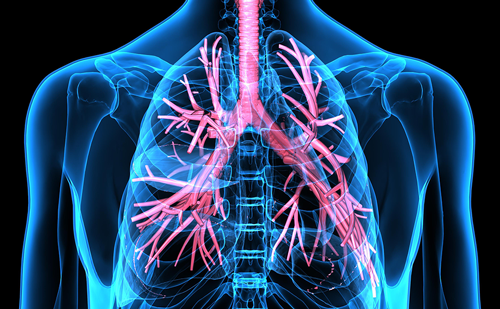It has now been over 2 years since the start of the coronavirus disease 2019 (COVID-19) pandemic, and millions of cases have been reported worldwide. It is increasingly being recognized that many individuals suffer from debilitating symptoms for months after the acute phase of the disease. This has been termed long COVID and is a heterogeneous condition comprising a range of symptoms, for which a number of definitions exist.1,2 To date, most research on long COVID has focused on adults. However, long COVID is also prevalent among paediatric populations.
In an expert interview, Dr Katelyn Krivchenia discusses the incidence, risk factors and severity of long COVID in children.
Q. What studies have investigated long COVID in children, and what are their limitations?
Most of the clinical research addressing long COVID in paediatrics has been descriptive in nature, with attempts to define its prevalence and describe signs and symptoms experienced after severe acute respiratory syndrome coronavirus 2 (SARS-CoV-2) infection. Study results have relied mostly on self-reported symptoms by the patient or guardian, often through surveys by phone or in person. The lack of clarity surrounding the definition of long COVID has made it a challenging entity to study, with very few (if any) truly objective measures available for its diagnosis or monitoring. Current suggested definitions include signs or symptoms developing and persisting for more than 4 weeks1 or more than 12 weeks2 following COVID-19 that cannot be otherwise explained.
Q. What have study data taught us about the incidence, risk factors and severity of long COVID in children?
A recent meta-analysis evaluating more than 80,000 children and adolescents across 12 countries found that 25.2% of children under the age of 18 reported one or more symptoms more than 4 weeks following SARS-CoV-2 infection.3 Whilst more than 40 signs and symptoms were identified, the most commonly reported manifestations were mood symptoms, fatigue, sleep disorders, headache and respiratory symptoms.3 An Italian study of over 600 children aged 16 years or younger suggested that having symptomatic COVID-19 increased the likelihood of developing long COVID symptoms compared with children who were asymptomatic.4 Additionally, increasing age in this cohort of patients also increased the likelihood of long COVID symptoms, particularly those related to neurologic and psychiatric symptoms and fatigue. Respiratory symptoms were more common in children younger than 5 years.4 The Italian study suggested that children with pre-existing medical conditions did not seem to be at an increased risk of developing long COVID, and, in fact, the presence of immunodeficiency has been associated with a decreased incidence of long COVID symptoms.4,5
Q. What different manifestations of long COVID have been reported in children?
Mood symptoms, including symptoms of depression and anxiety, are commonly reported by children with long COVID. Children or their guardians may also report difficulties with cognitive function and task completion during school or daily household tasks, which are sometimes termed ‘brain fog’. Fatigue is frequently reported and sometimes difficult to separate from mood symptoms or its association with reports of impaired sleep or exertional dyspnoea.
The most common respiratory symptoms reported by paediatric patients include exertional dyspnoea, cough and exercise intolerance.6 Lung function testing in patients with long COVID may show evidence of airway obstruction (15%) or bronchodilator responsiveness (28–30%), while plethysmography and diffusion capacity are generally normal in these patients.7 Evaluating for paroxysmal vocal fold movement disorder may also be warranted, as this has been reported in both the paediatric and adult population.
Symptoms of dysautonomia, including orthostatic hypotension, positional orthostatic tachycardia syndrome and orthostatic symptoms not meeting the criteria for these diagnoses, are commonly reported. This has raised the concern of the possible overlap of long COVID with myalgic encephalomyelitis/chronic fatigue syndrome.8
Q. How can we distinguish the long-term symptoms caused by SARS-CoV-2 infection from pandemic-related symptoms?
Studies using age-matched negative controls may help us distinguish the symptoms of long COVID from those related to the pandemic. Reported symptoms of depression and anxiety in children and adolescents are higher than in pre-pandemic conditions worldwide.9 Whilst many posit that mood symptoms of long COVID are due to pandemic-related isolation, research in young adults has found significantly higher objective scores of depression and anxiety symptoms in patients post-COVID-19 compared with their non-infected peers, even after controlling for days of social distancing, amount of social interaction and number of significant life changes during the pandemic.10 Additionally, patients with a history of COVID-19 had a significant decrease in executive functioning during computer-based testing compared with their non-infected peers.10
A large cohort study from the Public Health England database of more than 50,000 patients revealed that adolescents were significantly more likely to experience fatigue, dyspnoea, chest pain, headaches, difficulty with attention and muscle pains 3 months after SARS-CoV-2 infection when compared with their age-matched, SARS-CoV-2-negative peers.11 While pandemic-related isolation has likely had an impact on the physical conditioning of children worldwide, it does not account for the persistence in patients with long COVID now years out from the initial lockdown.
Q. What questions remain unanswered regarding long COVID in children?
There is obviously much to learn about the cause of long COVID symptoms and how best to treat them. Researchers have proposed a persistent viral antigen presence triggering a dysregulated immune response resulting in low-grade inflammation and multi-organ involvement as a major cause of long COVID sequelae.12 Other potential contributing mechanisms include virus-specific damage to various organ systems and, for adult patients, sequelae of post-intensive care.13
Once the underlying mechanisms of long COVID are better understood, studies addressing effective and safe therapies should move forward, including those with a focus on paediatric patients. Quantifying disease severity in this group of children is difficult and has not been adequately explored. For many patients, persistent symptoms result in missed school, poor academic performance, inability to participate in prior extracurricular activities and a fundamental change in daily life. Further work to quantify this burden in the paediatric space is required.








